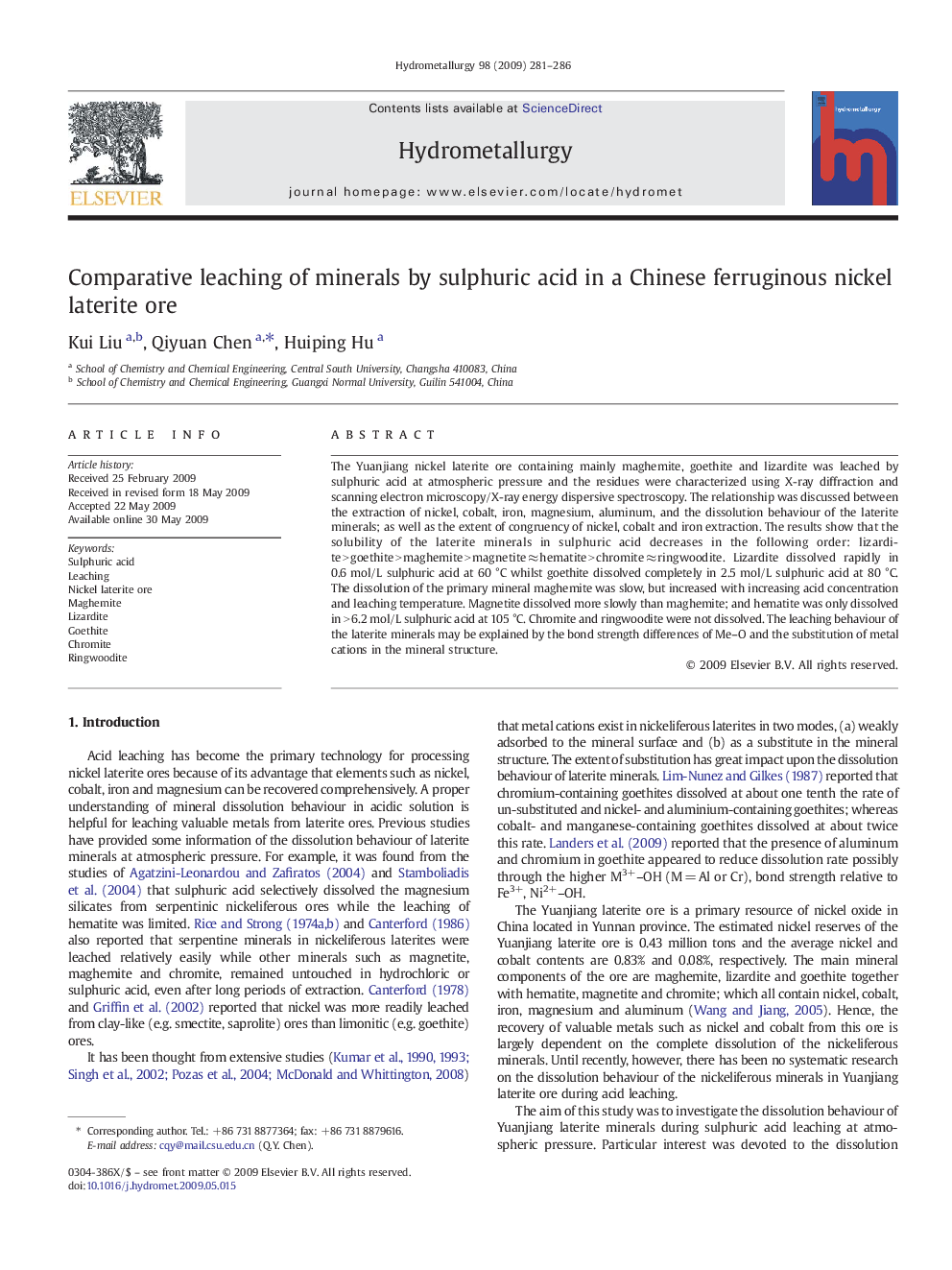| Article ID | Journal | Published Year | Pages | File Type |
|---|---|---|---|---|
| 213159 | Hydrometallurgy | 2009 | 6 Pages |
The Yuanjiang nickel laterite ore containing mainly maghemite, goethite and lizardite was leached by sulphuric acid at atmospheric pressure and the residues were characterized using X-ray diffraction and scanning electron microscopy/X-ray energy dispersive spectroscopy. The relationship was discussed between the extraction of nickel, cobalt, iron, magnesium, aluminum, and the dissolution behaviour of the laterite minerals; as well as the extent of congruency of nickel, cobalt and iron extraction. The results show that the solubility of the laterite minerals in sulphuric acid decreases in the following order: lizardite > goethite > maghemite > magnetite ≈ hematite > chromite ≈ ringwoodite. Lizardite dissolved rapidly in 0.6 mol/L sulphuric acid at 60 °C whilst goethite dissolved completely in 2.5 mol/L sulphuric acid at 80 °C. The dissolution of the primary mineral maghemite was slow, but increased with increasing acid concentration and leaching temperature. Magnetite dissolved more slowly than maghemite; and hematite was only dissolved in > 6.2 mol/L sulphuric acid at 105 °C. Chromite and ringwoodite were not dissolved. The leaching behaviour of the laterite minerals may be explained by the bond strength differences of Me–O and the substitution of metal cations in the mineral structure.
